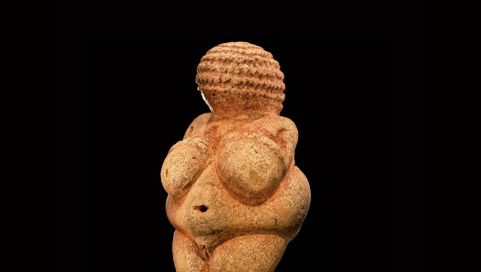From the archive 2022, a quick thought about art and culture …
She sits on the front porch this morning, enjoying an early spring frost, breathing in a light shiver of air. She is doing her homework reading — studying the image of the Venus in her course book. Here is a woman, she thinks. The maternal goddess. The feminine ideal of the early Stone Age. Her head is turned away, her curly hair hides her face. Is this modesty? No, she has a secret, she has magic.
“This lovely little artifact, is a fertility figure, a symbol of sensuality and desire. Her power is apparent in the exaggerated features of her body. It dates to the Upper Stone Age, making it one of the oldest and most famous surviving works of art ever found. It was unearthed in Willendorf, Austria in 1908.”
Minnie has a sudden moment of clarity. The body of this goddess does not betray her. She is not shamed. She simply is as she is. And, unfortunately for me, I am a woman born 25,000 years too late to be considered beautiful.







Eye of the beholder perspective. The ‘Venus’ small sculpture was magnificent and magical. Earth mother revered; her secrets honored by devotees deep in recesses of caves where small hands imprints on walls like Lascaux caves with magical figures are found and now believed painted by women as fertility rituals in areas too small for men to reach. Matriarchy lasted until a higher male power rose like Zeus and Odin. But women have a secret solidarity.
Fascinating, Sharron. Who made that figure, I wonder, and what was its purpose? Was it religious, personal, artistic, porn? There are probably quite a few doctoral theses written about that question, but can we ever know?